- B-Stock Polish Pottery – Sorted & Unique
- Bowls
- Butter Dishes
- Mugs
- More
- Plates

- Jars

- Outlet

- Polish Pottery Platters – Wide Selection of Shapes & Sizes

- Jugs & Pitchers – Wine, Water, Juice, Milk – Polish Pottery

- Wintry

- Decoration
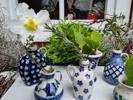
- Teapots & Coffee Pots in Bolesławiec Polish Pottery

- Artists

- Faith – Christianity – Polish Pottery

- 1000 and a cup

- Custom made

- Exclusive Polish Pottery

- Gift Voucher for Polish Pottery – Give Handcrafted Quality

- Over 4600 Polish Pottery Patterns

- Unique pieces Polish pottery

- Polish Pottery Sets & Second Choice – Beauty at a Great Price

- Saucier – Cooking with Polish Stoneware

- Soup Kitchen – Polish Pottery

- Complete service

- Exhibition Room

- Bathroom & WC – Polish Pottery by Ceramika Artystyczna

- Pizza Baking – Polish Pottery

- Vases in Polish Pottery – Ceramika Artystyczna

- Chef Pâtissier – Sweet and Savoury – in, on and with Polish Pottery

- Garde-Manger – Cooking with Polish Pottery Tableware
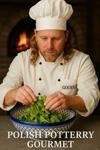
- Plongeur – Cleaning Polish Pottery Tableware

- Rôtisseur – Cooking with Polish Pottery

- Polish Pottery Sets at Discount Prices

- For the Danish Kitchen – Ceramic Tableware

- Grillardin – Grilling, Smoking & Barbecue with Polish Pottery

- Bulk Discount – Save on Polish Pottery
- Customer Service & FAQs – Polish Pottery
- Sweet Dreams

- For the German Kitchen – Polish Pottery Tableware

- The History of Polish Pottery

- For the Polish Kitchen – Polish Pottery

- For the Spanish Kitchen – Polish Pottery

- Ceramika Artystyczna - The Queen of Polish Pottery Ceramics

- Dishes for lovers

- Polish pottery gallery

- Sustainability

- Polish Ceramics from Ceramika Manufaktura

- Breakage-Free Guarantee – Safe Delivery of Your Polish Pottery
- Polish Pottery – Safe, Food-Safe & Everyday-Ready
- Reorder Guarantee – Your design available for many years
- Cookbook – Recipes and Cooking with Polish Pottery by Gourmet Chef Christian Kindervater

- Special Shipping Requests

- Gift Wrapping – Polish Pottery

- Trusted Shops Buyer Protection – Excellent Shop – Certified for 17 years (since 15/05/2008) – Bunzlauergrosshandel.de

- Plates
Polish Pottery Onion Storage Pot 1.5L
Our Polish Pottery Onion Storage Pot (1.5 liters) is the perfect solution for storing onions and other vegetables that need to be kept in a cool, dry place. The pot features several large ventilation holes on the sides, ensuring optimal air circulation to keep your onions fresh for longer. Made from handcrafted Polish pottery, it is not only functional but also a stylish addition to your kitchen. The two practical handles on each side make it easy and safe to carry, even when the pot is full. Ideal for storing onions and other dry goods!
The Common Onion (Allium cepa): Origin, Varieties, History, and Culinary Importance
1. Origin and Ancestry of the Onion
The common onion (Allium cepa) belongs to the Amaryllidaceae family and is one of the oldest cultivated plants known to humanity. Its exact origin is not entirely certain, but botanists believe it comes from Central Asia, particularly the regions of present-day Iran, Afghanistan, and Pakistan. Evidence of onion cultivation dates back to around 3000 BCE in Ancient Egypt, where it also had symbolic and ritual significance.
2. Varieties of Onions
Onions vary in color, shape, flavor, and storage quality. Common types include:
Yellow Onion: Mild and versatile, ideal for cooking, long shelf-life.
Red Onion: Slightly sweet, excellent raw in salads or sandwiches.
White Onion: Mild and juicy, widely used in Mediterranean cuisine.
Shallots (Allium ascalonicum): Delicate, aromatic flavor, favored in French cooking.
Spring Onion (Allium fistulosum): Long green stems, mild flavor, often eaten raw or lightly cooked.
3. History of the Onion
The onion has played a vital role in nutrition and culture throughout history. In Ancient Egypt, it symbolized eternity due to its concentric layers. During the Middle Ages in Europe, it was not only a food item but also considered a medicinal remedy and even used as currency. With the expansion of trade routes, onions spread and became a global crop.
4. Differences Between Organic and Conventional Onions
The main differences between organic and conventionally grown onions are in the farming methods used:
Organic Onions:
Grown without synthetic pesticides or chemical fertilizers.
Use of crop rotation, compost, and natural pest control.
Often have a more intense flavor and longer growing cycle.
Certified by organic labels (e.g., EU organic logo).
Conventional Onions:
Use of synthetic fertilizers and pesticides to increase yield.
Cheaper to produce, but often with slightly lower micronutrient density.
Shorter growing time and longer commercial availability.
5. Culinary Use of the Onion
The onion is fundamental to countless cuisines around the world. It is used as a flavor base in soups, sauces, stews, and countless savory dishes. In fine dining, onions are used to build flavor complexity and depth, whether raw, caramelized, or in forms such as onion confit or French onion soup.
Chives (Allium schoenoprasum): Culinary Uses and 5 Unique Recipes
Chives are closely related to onions and are characterized by their fine, hollow green stems. They are rich in vitamin C and essential oils and are typically used raw, as heating diminishes their flavor and nutritional value.
Culinary Uses of Chives
Chives pair well with:
Fresh cheese, yogurt, or quark
Egg dishes such as omelets and scrambled eggs
Potatoes and soups
Herb butters and dips
As a garnish for cold dishes
Five Unique Recipes with Chives
Chive Crêpes with Goat Cheese Filling
Ingredients: Flour, milk, eggs, fresh chives, goat cheese, honey, walnuts.
Preparation: Make a savory crêpe batter with finely chopped chives; fill with goat cheese, a drizzle of honey, and toasted walnuts.Potato Soup with Chive Oil
Ingredients: Potatoes, onions, vegetable broth, cream, chives, rapeseed oil.
Preparation: Blend the soup smooth. Make chive oil by blending chives with oil and drizzle over the soup before serving.Chive Pesto
Ingredients: Chives, sunflower seeds, Parmesan, olive oil, garlic.
Preparation: Blend all ingredients. Great with pasta, bread, or fish.Scrambled Eggs with Lemon-Chive Butter
Ingredients: Eggs, butter, lemon zest, salt, chives.
Preparation: Prepare scrambled eggs; top with a compound butter made from lemon zest and fresh chives.Chive Pancakes with Smoked Salmon and Horseradish Cream
Ingredients: Flour, milk, eggs, chives, smoked salmon, horseradish, crème fraîche.
Preparation: Make savory pancakes with chives, fill with smoked salmon and horseradish-flavored crème fraîche.









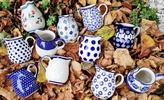
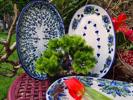





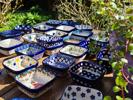
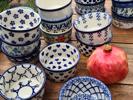

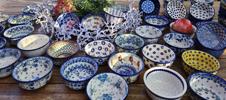





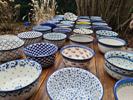






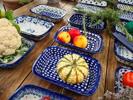




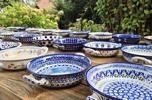





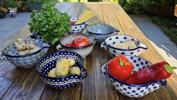












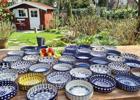

























 Plenty Lions
Plenty Lions